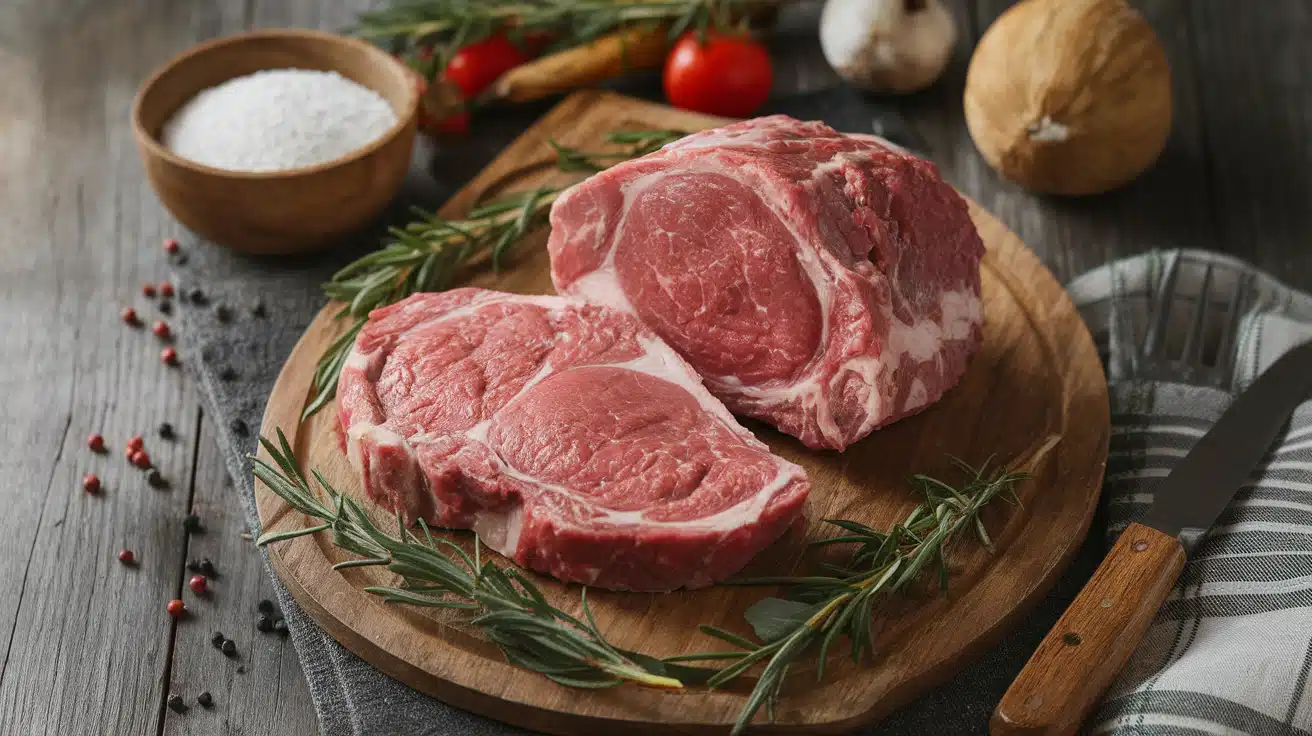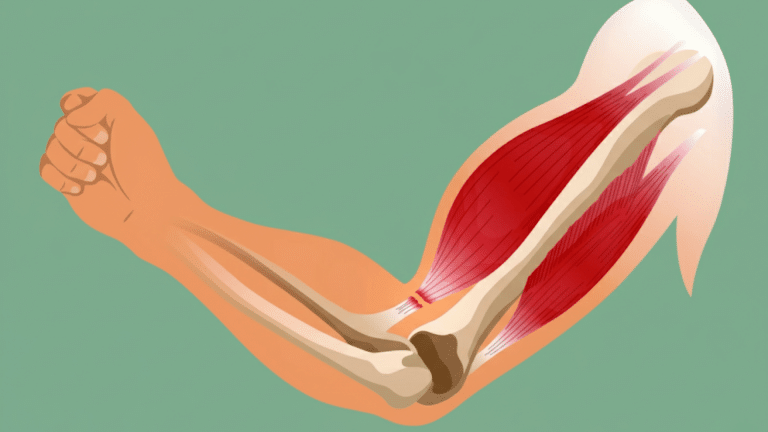Lamb sits on dinner tables worldwide, from Greek gyros to Indian curries. But when nutrition labels show 17 grams of fat per serving, many people wonder if this red meat fits into a healthy diet.
The answer isn’t black and white. Lamb delivers impressive amounts of protein, iron, and vitamin B12 that your body craves.
Yet it also contains more saturated fat than chicken or fish. Some cuts are leaner than others. Cooking methods matter too.
This article breaks down lamb’s complete nutrition profile, weighs the proven health benefits against potential risks, and shows you how to enjoy lamb as part of a balanced eating plan.
You’ll learn which cuts to choose and cooking methods that maximize nutrition while minimizing health concerns.
Lamb Nutrition Facts
A quick breakdown of lamb’s calories, protein, fats, and essential vitamins to help you make smarter food choices.
| Nutrient | Amount | % Daily Value* |
|---|---|---|
| Calories | 258 kcal | 13% |
| Protein | 25 g | 50% |
| Total Fat | 17 g | 26% |
| Saturated Fat | 7 g | 35% |
| Cholesterol | 97 mg | 32% |
| Iron | 1.8 mg | 10% |
| Zinc | 4.2 mg | 38% |
| Vitamin B12 | 2.6 µg | 108% |
| Selenium | 24 µg | 44% |
| Sodium | 72 mg | 3% |
What Exactly Is Lamb Meat?
Lamb comes from young sheep that are less than 12 months old. This makes the meat much more tender and mild compared to mutton, which comes from older sheep.
You’ll find lamb sold in various cuts, such as chops, leg roasts, shoulder, and ground meat. Each cut has its own texture and fat content.
Lamb has a distinctive taste that’s stronger than chicken or beef but not as intense as goat meat. The younger age of the animal means the meat cooks faster and stays juicy when prepared correctly.
Health Benefits of Lamb
Lamb isn’t just delicious, it’s also packed with high-quality protein, essential vitamins, and minerals that support muscle health, energy, and immunity.
1. High-Quality Protein
Lamb packs 25 grams of complete protein per 100-gram serving. This protein contains all nine essential amino acids your body needs for muscle repair and growth.
The high protein content helps you feel full for longer, making it an excellent choice for weight management. Athletes and fitness enthusiasts often choose lamb to support their training goals and recovery.
2. Rich in Iron
Lamb provides heme iron, which your body absorbs much better than iron from plants. This type of iron helps prevent anemia and fatigue.
Just one serving provides approximately 10% of your daily iron needs. Women and growing children especially benefit from this easily absorbed iron source.
3. Boosts Energy and Brain Health
A single serving of lamb delivers over 100% of your daily vitamin B12 requirement. This vitamin is essential for producing red blood cells and maintaining a healthy nervous system.
B12 also helps convert food into energy, helping to fight off that tired feeling. Your brain needs B12 to function properly and maintain good memory.
4. Strengthens Immunity
Lamb is loaded with zinc and selenium, two minerals that boost your immune system. Zinc helps wounds heal faster and supports your body’s natural defenses.
Selenium acts as an antioxidant, protecting your cells from damage. Together, these minerals help your body fight off infections and maintain its health year-round.
Potential Health Concerns of Eating Lamb
While lamb is a nutrient-rich food, overconsumption may increase health risks associated with high fat, cholesterol, and red meat intake.
-
Saturated Fat & Cholesterol: Lamb contains 7 grams of saturated fat per serving, which can raise your bad cholesterol levels if you eat too much regularly.
-
Heart Health Risks: Eating large portions of fatty lamb cuts frequently may increase your chances of developing heart disease over time.
-
Cancer Risk: Studies suggest that consuming high amounts of red meat, like lamb, might slightly raise your risk of colorectal cancer.
Grass-Fed vs. Grain-Fed Lamb
While both types of lamb are nutritious, grass-fed lamb offers more heart-healthy fats and antioxidants, whereas grain-fed lamb tends to be richer, fattier, and more affordable.
| Feature | Grass-Fed Lamb | Grain-Fed Lamb |
|---|---|---|
| Fat Content | Leaner, less total fat | Higher fat content |
| Omega-3 Fatty Acids | Higher (supports heart health) | Lower |
| Conjugated Linoleic Acid (CLA) | Higher (linked to better metabolism & fat-burning) | Lower |
| Flavor Profile | Earthier, slightly gamey | Milder, richer flavor |
| Nutrients | More antioxidants (like vitamin E) | Standard nutrient profile |
| Price | More expensive | More affordable |
| Best For | Heart health, weight management, nutrient density | Budget-friendly meals, richer taste |
Who Should Eat Lamb and Who Should Limit It?
Not everyone’s plate should look the same. Here’s who benefits most from lamb, and who may need to cut back.
Great Choice for
- Athletes and active individuals needing protein, Lamb’s 25 grams of protein per serving helps build muscle and supports recovery after intense workouts.
- People with iron deficiency or anemia can benefit from the heme iron in lamb, which absorbs easily and helps boost low iron levels more effectively than plant sources.
- Those following high-protein diets (paleo, keto, Mediterranean) – Lamb fits perfectly into these eating plans with its high protein and moderate fat content.
Limit or Avoid if You
- Individuals with high cholesterol or heart disease should be cautious, as Lamb’s 7 grams of saturated fat per serving can exacerbate these conditions if consumed regularly.
- Eat large amounts of red meat on a daily basis. Adding lamb to an already meat-heavy diet may increase your risk of heart problems and certain cancers.
- Follow a plant-based or low-saturated fat diet; lamb doesn’t align with these dietary approaches due to its animal origin and high fat content.
Healthy Ways to Cook Lamb
The cooking method you choose can make lamb healthier or less healthy for you. Grilling, roasting, braising, and slow cooking are your best options because they don’t add extra fat.
These methods help retain the natural nutrients while keeping calories in check. Skip deep-frying and heavy cream or butter sauces that add unnecessary saturated fat.
Instead, season your lamb with fresh herbs like rosemary, thyme, or garlic for flavor without the extra calories.
Serve your cooked lamb alongside colorful vegetables and whole grains, such as quinoa or brown rice, to create a well-balanced, nutritious meal that fills you up.
Conclusion
So, is lamb healthy? The answer depends on how you eat it. Lamb offers exceptional protein, iron, and vitamin B12 that support muscle health, energy levels, and brain function.
However, its high saturated fat content means moderation is key.
Choose lean, grass-fed cuts when possible. Grill, roast, or braise instead of frying.
Pair lamb with vegetables and whole grains for balanced nutrition. If you have heart disease or high cholesterol, limit your intake and consult your doctor.
Lamb can be an integral part of a healthy diet when consumed in moderation and thoughtfully. Focus on quality over quantity, and you can enjoy this flavorful meat while supporting your health goals.
Want to make smarter protein choices? Share this article with friends who love red meat, and let us know in the comments which lamb cuts you prefer for healthy cooking.
Frequently Asked Questions
Is Lamb The Healthiest Meat To Eat?
Lamb is nutritious, but not the healthiest overall; lean poultry and fish typically offer better heart health benefits with less saturated fat.
Is Chicken Healthier Than Lamb?
Yes, chicken (especially skinless) is generally healthier than lamb because it contains less saturated fat and fewer calories per serving.
What Are The Disadvantages Of Lamb Meat?
Lamb’s main downsides include a high saturated fat content, a higher cost, and a potential increased risk of heart disease if consumed in large amounts.
Why Do I Feel So Good After Eating Lamb?
You likely feel energized after eating lamb due to its high protein content, iron, and vitamin B12, which boost energy levels and support brain function.








